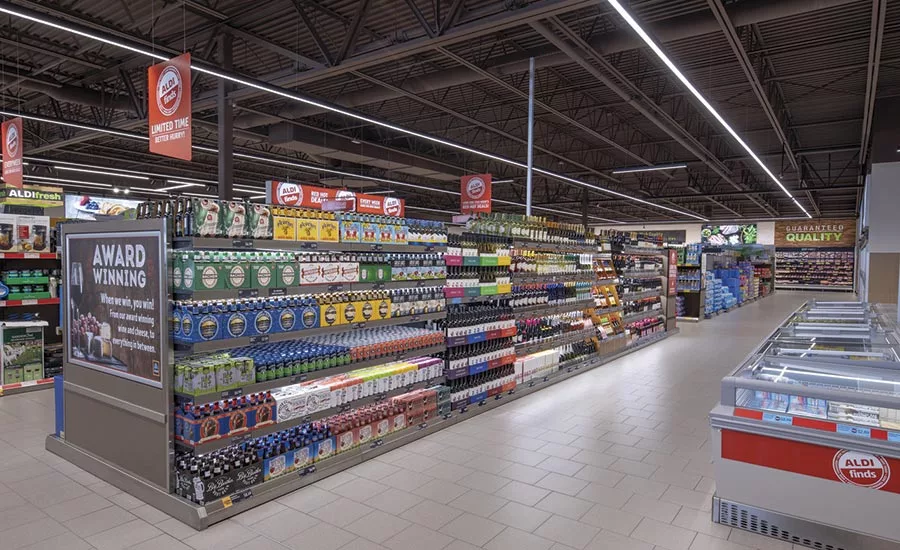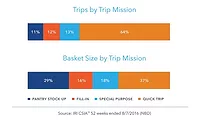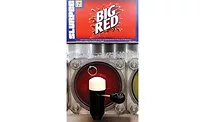Discount variety stores sustain modest 4 percent growth to 2019
Value-focused ALDI features easy store layout, less selection but cheaper prices

“It is thrifty to prepare today for the wants of tomorrow,” reads a quote on the BrainyQuote website. Although per capital disposable income is up and the jobless rate holds steady at 3.7 percent, this hasn’t stopped cash-starved students from eating Ramen noodles or consumers from ordering off the Dollar Menu at McDonald’s to save some hard-earned cash.
In its August 2019 report titled “Dollar & Variety Stores in the US,” Los Angeles-based IBISWorld notes that dollar and variety stores have “performed strongly” during the five years to 2019. In fact, the discount retailer channel generated $87.4 billion in sales at a compound annual growth rate (CAGR) of 4 percent, it stated.
Although the industry typically targets low-income earners, the consumer pool has expanded to include middle-income shoppers and even some high-income earners interested in bargain shopping. Although industry revenue has expanded, the rise of premium private-label products, eCommerce and strong external competition from warehouse clubs and supercenters and industries offering similar products with only slight differences in price, quality, quantity and store format might cause dollar store revenues to dip, the report notes.
“In 2019 alone, industry revenue is only expected to rise 3.1 percent, which lags the average of the current period,” the report states. From 2019 through 2024, the report predicts a CAGR of 3.5 percent.
When it comes to hunting for bargains, consumers have several discount stores from which to choose. With 31.3 percent of market share, Goodlettsville, Tenn.-based Dollar General Corp. operates 15,472 stores; Chesapeake, Va.-based Dollar Tree Stores Inc. has a market share of 27.3 percent and runs 15,115 stores; and Big Lots Inc., Westerville, Ohio, commands 6.2 percent of the market and operates 1,400 stores, according to IBISWorld.
In a blog post dated Jan. 21, 2019, Statista writer Jan Conway notes the “rapid growth” of the dollar store industry throughout the United States and North America.
“The stores tend to be located in smaller communities that are too small for Walmarts. Dollar store sales amounted to approximately $33.8 billion in 2016,” Conway wrote. “In that year, there were about 30,500 dollar stores across the United States. By 2021, that number is expected to grow to about 38,000.”
Dialing up the fun
Discount retailers also are seeing positive performance from smaller-format supermarkets. Founded in 1946 by two brothers, Essen, Germany-based ALDI operates more than 10,000 discount supermarkets in 20 countries, including more than 1,900 stores in 36 states, according to an ALDI press release.
Keeping consumers satisfied with high-quality, lower-priced items in an easy-to-navigate store layout is part of ALDI’s goal, the company says. In fact, in an ALDI-commissioned study by Kantar, which surveyed 700 people between the ages of 18-64 across four regions of the country, 77 percent of respondents indicated that shopping at the value-focused grocery is simpler, faster, more cost-effective and more fun to shop than Walmart Supercenters, states an Oct. 11, 2019, ALDI press release.
In addition to creating a positive in-store experience, ALDI also has been ramping up its home delivery services since joining forces with Instacart in 2017. Today, shoppers at nearly every ALDI store in more than 10,000 zip codes nationwide have access to online grocery delivery, according to a Nov. 13, 2019, press release.
In late 2019, the company announced it was making it easier for consumers to “dial up the fun,” with nationwide delivery of alcohol products via Instacart. ALDI’s high-quality, affordable in-store selections include bubblies like Grandi Mori Valdobbiadene Prosecco, Winking Owl wines, and craft beers, the grocer said in a Nov. 13, 2019, press release.
“Our award-winning wines range from less than $5 for 90-point rated Evanta Malbec to $12 for premium offerings, such as 92-point rated Peaks & Tides Cabernet Sauvignon,” said Scott Patton, vice president of corporate buying for ALDI U.S., in a statement. “You can have a bottle delivered to your doorstep in as fast as an hour.”
The dollar and variety stores channel has thrived during the past five years, leaving behind its traditional rivals in the retail sector through its industry practices like pricing and channel-management strategies, the changing landscape of stores, the variety of products offered and market segment continuing to drive growth, according to IBISWorld’s report.
During the five years to 2024, the channel is expected to grow at a lower CAGR of 3.5 percent vs. the 4 percent five-year CAGR to 2019.
Yet, the report cautions that while major players continue expanding, smaller companies and single-branch operators are less likely to sustain revenue gains through 2024, particularly as the channel transitions into a more mature phase.
“Over the next five years, the industry is expected to consolidate and experience tougher competition from traditional rivals, such as Walmart Inc., which will likely pressure demand,” IBISWorld reports states. “… Overall, industry revenue is forecasted to increase at an annualized rate of 3.5 percent to $103.6 billion over the next five years.” BI
Looking for a reprint of this article?
From high-res PDFs to custom plaques, order your copy today!





